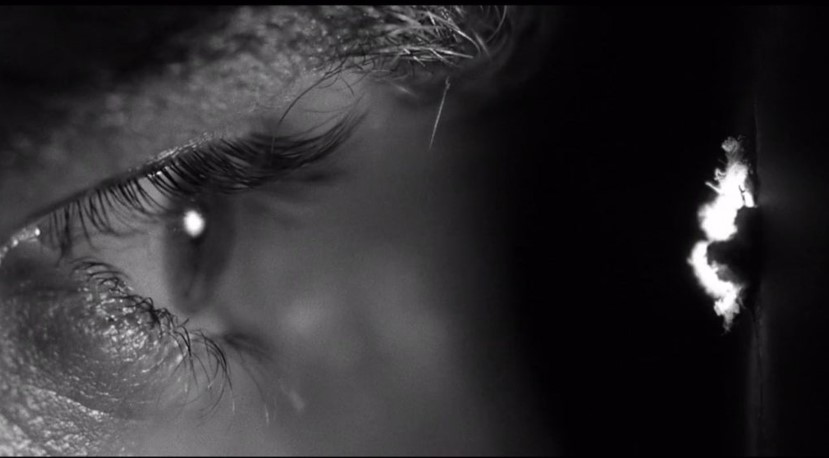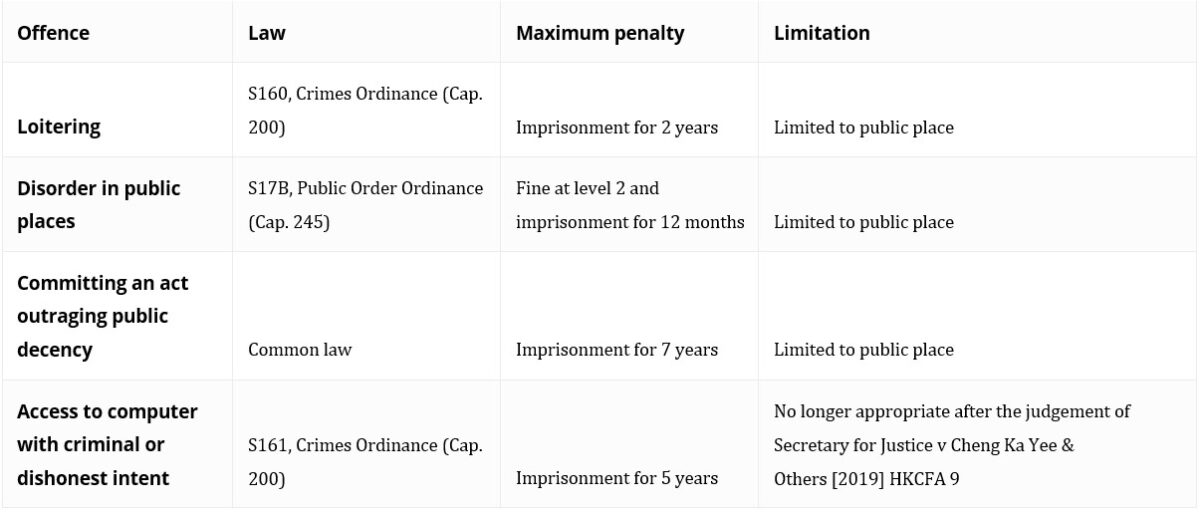Voyeurism and Related Offences: An Imminent Need for Legislation

Over the past few years, the city’s Law Reform Commission (“LRC”) and legislature have been called upon to consider the necessity of introducing new specific offences to criminalise and properly address the acts of voyeurism, non-consensual recording of intimate parts and non-consensual publication of intimate images.
Table of Contents
- Current Legislation on Voyeurism
- Crimes (Amendment) Bill 2021
- Final Thoughts on Voyeurism Legislation
Current Legislation on Voyeurism
In Hong Kong, there is currently no specific legislation in place that specifically deals with the above-mentioned indecent acts. Instead, they have been regulated by different laws for different cases for guidance. In respect of the existing offences (*please see Table 1 below) which the Department of Justice (“DOJ”) normally relies on to prosecute, significant gaps and deficiencies have been identified and commented upon by legal practitioners and in the recent judgments.
In particular, the legal vacuum became more severe following a Court of Final Appeal (“CFA”) decision, which sparked an urgent need for new legislation. In the judgment of Secretary for Justice v Cheng Ka Yee & Others [2019] HKCFA 9, CFA clarified that section 161(1)(c) of the Crimes Ordinance (the offence of “Access to Computer with Criminal or Dishonest Intent”) shall not be interpreted as covering the use by a person of his or her own computer which does not involve any access to another’s computer. As a result, this offence which used to be frequently used as a “one-size-fits-all” charge becomes no longer sufficient for prosecuting actions such as taking upskirt photos, if the act involves only the defendant’s own computer.

[Table 1]
Crimes (Amendment) Bill 2021
As a consequence of judicial comments in various judgments as well as LRC’s Report on Voyeurism and Non-consensual Upskirt-Photography dated 30 April 2019, the Hong Kong Government launched the consultation paper on the “Proposed Introduction of Offences of Voyeurism, Intimate Prying, Non-consensual Photography of Intimate Parts, and Related Offences” (“the Consultation Paper”) on 8 July 2020.
Following the completion of the three-month public consultation period during which members of public, including various opinions and comments of different organizations, were invited, the Security Bureau then released the “Report on the Consultation on Proposed Introduction of Offences of Voyeurism, Intimate Prying, Non-consensual Photography of Intimate Parts, and Related Offences” (“the Report”) on 8 January 2021.
Later, based on the consultation result and further discussions, the Security Bureau published the Legislative Council Brief (“the LegCo Brief”) on 17 March 2021 advising that the Crimes (Amendment) Bill 2021 (“the Bill”) should be introduced into the Legislative Council (“LegCo”). The Bill was then published in the Gazette on 19 March 2021 and then brought to its First Reading at LegCo on 24 March 2021.
In gist, the latest legislative proposals contained in the Bill are to amend the Crimes Ordinance (Cap. 200) through the introduction of four new offences:
- Voyeurism
- Non-consensual recording of intimate parts
- Publication of images originating from the commission of the offence under the new section 159AAB(1) or 159AAC(1)
- Publication or threatened publication of intimate images without consent.
s159AAB, Voyeurism
Previously, the Consultation Paper and the Report proposed to introduce two offences: Voyeurism (of which the purpose is to obtain sexual gratification) and Intimate Prying (irrespective of purpose). The maximum penalty proposed for Voyeurism and Intimate Prying was imprisonment for 5 years and 3 years respectively. This proposal was criticized by the public commenting that those acts, irrespective of the purpose, should be punishable at the same penalty level.
Therefore, the Bill has now abandoned the proposal of Intimate Prying and revised the definition of the new offence of “Voyeurism”. Under the current proposal, it is an offence for a person to surreptitiously observe (with or without the aid of equipment) or record an image of an individual who is in circumstances that give rise to a reasonable expectation of privacy without his or her consent, if:
- the individual is in a place in which any individual person can reasonably be expected to be nude, to reveal his or her intimate part, or to be doing an intimate act;
- the individual is exposing his or her intimate part, or is doing an intimate act, and the observation or recording is done for the purpose of observing or recording an intimate part or an intimate act, of any individual; or
- the observation or recording is done for a sexual purpose.
Under the current regime, the Government suggested a person’s “intimate parts” mean “the individual’s genitals, buttocks, anal region or breasts (whether exposed or only covered with underwear); or the individual’s underwear covering genitals, buttocks, anal region or breasts”, which covers both female and male breasts on the basis of the gender neutrality principle. It is worthwhile noting that Hong Kong is actually more advanced in this area, comparing with other common law jurisdictions. For example, Canada and New Zealand have specified the “female breasts” in their respective ordinances, whilst England and Wales don’t say so, but case law there has understood the word to be limited to female breasts only. On the other hand, some comments from the public suggest it might be problematic as it is not uncommon for males to have their chest exposed without feeling uncomfortable for others to see.
It is also notable that a person who installs equipment, or constructs or adapts a structure or part of a structure will be caught by the new offence as well.
s159AAC, Non-consensual recording of intimate parts
Similarly, the current proposal in the Bill no longer differentiates the acts based on the purpose (to obtain sexual gratification or not). Under the current proposed regime, the acts of “upskirting” as well as “down-blousing” would be caught by the new legislation if all of the following elements are met:
- the person actually records an image showing an intimate part of an individual, or the person operates an equipment with intent to observe or record an intimate part; and
- the intimate part would not otherwise be visible; and
- the act is done for a sexual purpose, or for the purpose of obtaining dishonest gain; and
- no consent is given by the individual to being observed or recorded, and the person disregards whether such consent is given.
Since the element of “public place” is not required, these new offences will make up for the deficiencies of the existing legislations.
s159AAD & s159AAE, Non-consensual Publication of Intimate Images
In today’s digital age, cases where private or pornographic photographs taken by a partner in an intimate relationship are then released on the internet, or even used to blackmail the victim has become regrettably common.
Therefore, although LRC did not address this particular issue, the Government took the initiative to advance the introduction of two corresponding offences: (1) to prohibit the publication without consent of intimate images that originate from the commission of the offence of voyeurism or non-consensual recording of intimate parts; (2) to prohibit the publication or threatened publication without consent of intimate images (including still images and videos) where consent might have been given, or was given, for the taking of such intimate images, but not for the publication or threatened publication.
Statutory Defence
There are two types of statutory defences in the current Bill. Section 159AAJ provides the defence regarding lawful authority or reasonable excuse, while section 159AAI suggests that for cases involving a subject individual who was aged under 16, or is mentally incapacitated, it would be a defence for a person who honestly believed that consent was given by the subject individual to the conduct, and that the person did not know and had no reason to suspect the subject individual was such a person.
Final Thoughts on Voyeurism Legislation
Surely, there are still uncertainties in existing proposals that will be mitigated by legislative processes and be clarified and interpreted in court in the future. Whilst the effects and influence of introducing these new offences remain to be seen, for individuals who are accused of sexual offences, as well as victims and/or witnesses of indecent harassments or assaults, it is recommended that they seek professional legal advice as soon as practicable. Haldanes has unrivalled experience in dealing with sexual offence related cases under the current regime as well as a rich understanding of the newly proposed offences. Our team of practitioners are capable of providing advice and support to clients in urgent circumstances.
For further information about our Criminal Defence practice, please click here.
Written by: Felix Ng, Partner & Florence Yan, Associate
Reference List
- Bills Committee on Crimes (Amendment) Bill 2021. (2021, March). Crimes (Amendment) Bill 2021. https://www.legco.gov.hk/yr20-21/english/bills/b202103192.pdf
- Court of Final Appeal. (2019). Secretary for Justice v Cheng Ka Yee & Others[2019] HKCFA 9
- Security Bureau. (2021, January). Appendix to the Consultation report. https://www.sb.gov.hk/eng/special/voyeurism/Volume_14.pdf
- Security Bureau. (2021, January). Report on the Consultation on Proposed Introduction of Offences of Voyeurism, Intimate Prying, Non-consensual Photography of Intimate Parts, and Related Offences. https://www.sb.gov.hk/eng/special/voyeurism/Consultation_Report_on_Voyeurism_Eng.pdf
- Security Bureau. (2021, March). Legislative Council Brief. https://www.legco.gov.hk/yr20-21/english/bills/brief/b202103192_brf.pdf
- The Government of HKSAR. (2020, July). Proposed Introduction of Offences of Voyeurism, Intimate Prying, Non-consensual Photography of Intimate Parts, and Related Offences. https://www.sb.gov.hk/eng/special/voyeurism/Consultation_Paper_Voyeurism_Eng.pdf


